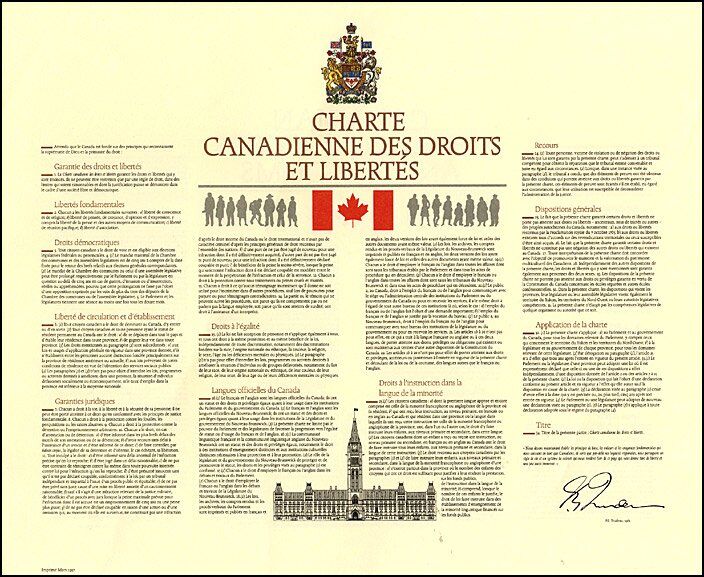The concepts covered in this sheet go beyond those seen in secondary school. It is intended as a supplement for those who are curious to find out more.
The notion of human rights is in fact the recognition of the dignity of the human person in the face of power. This issue is one of the oldest in society. As far back as Antiquity, writers and philosophers put forward ideas on the notion of human rights. Since then, the concept of human rights has evolved considerably and entered legal discourse, but it still pursues the same major objective: respect for human dignity.
All questions relating to human rights were first raised by philosophers. They asked questions about relations between people, between people and power, and about the limits to the exercise of power. These questions are present in all civilisations through the application of laws and Papal edict.
The history of human rights can be divided into two parts: a first part based on the writings of thinkers and a second part made up of legal texts.
The recognition of human rights has always been in opposition to the system of laws applied by the powers that be. Natural law (morals, principles and values) is opposed to legal law (laws, Papal edict and the judicial system).
As far back as Antiquity, there was a debate between established laws and human rights. Sophocles was one of the authors who argued that natural law took precedence over legal law. He said that it was legitimate to oppose those in power when the laws were unjust.
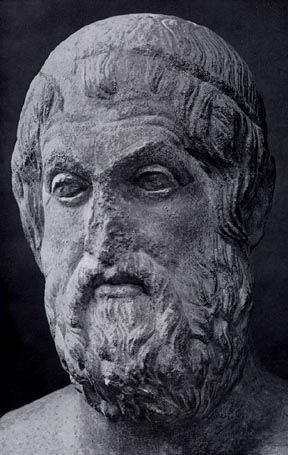
Bust of Sophocles
Many texts from the Middle Ages and the 16th century also put forward similar ideas, including the writings of St Thomas Aquinas. These ideas were further developed by the thinkers of the Reformation: Luther and Calvinist. Indeed, they contributed to the development of a sense of freedom and individual responsibility. Freedom, which until then had been a special privilege, became a right.
The very first legal text on human rights was drawn up in 1215. It was the Magna Carta, drawn up and applied in Great Britain. The main thrust of the charter was to protect individuals against the arbitrary exercise of power. The charter was also accompanied by a number of measures designed to protect individual freedom.
The 17th century saw a change in the definition of natural law, with philosophers stipulating that natural law could be defined through the exercise of reason. These philosophers of the École du droit naturel et des gens, influenced by the thought of Descartes, effectively developed rational thinking around natural law. In this new thinking, all individuals can lay claim to natural law and all can resist the oppression of an unjust power. This new definition was initially born out of the need to clearly delimit the rights of individuals following the colonization of America and the emergence of slave societies.
Also in the 17th century, the first Bill of Rights was published in England in 1689. This declaration, which did not claim to be universal, gave the right to political freedom and personal liberty. This declaration was strongly influenced by the context of the time in England, and could not be adopted by other states.
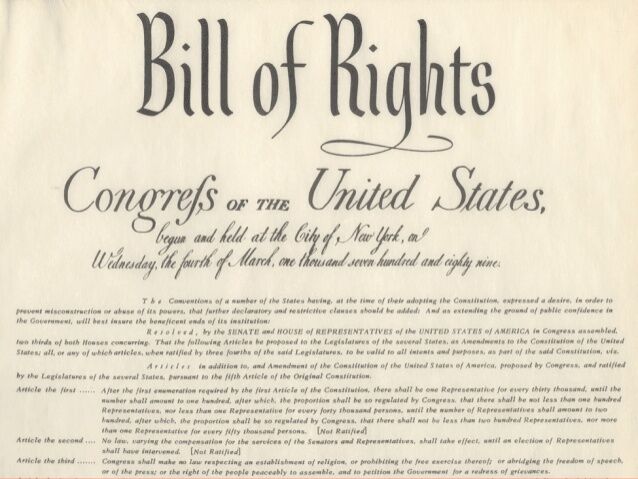
Bill of Rights
Enlightenment philosophers were mainly concerned with the notions of freedom, equality and tolerance. Many of them questioned the relationship between individuals and the state. In their view, natural law was the limit to the power of the State: the State could not exercise its power by encroaching on natural law. To better control the exercise of power, many thinkers of the time proposed political reforms aimed at sharing power (separation of powers, democracy, etc.). Equality, which is innate and natural, is in fact the founding principle of freedom. This is why Enlightenment philosophers fought against discrimination.
Both the American Revolution and the French Revolution were historical upheavals that encouraged the legal application of Enlightenment ideas. These revolutions also gave rise to a number of declarations on human rights.
In the United States, in addition to the Declaration of Independence of the colonies of 1776, several former colonies have written their own declarations, including the Virginia Bill of Rights. These texts aimed to guarantee the rights of the subject in the face of power and were more pragmatic in nature, giving the declarations a more universal scope.
In France, it was above all the Declaration of the Rights of Man and of the Citizen, which came into force on August 26, 1789, that marked an important moment in the French Revolution. This declaration was influenced by the American Declaration of Independence. It was therefore at the end of the 18th century that human rights took on their current meaning. Indeed, these first declarations had a strong influence on those that followed.
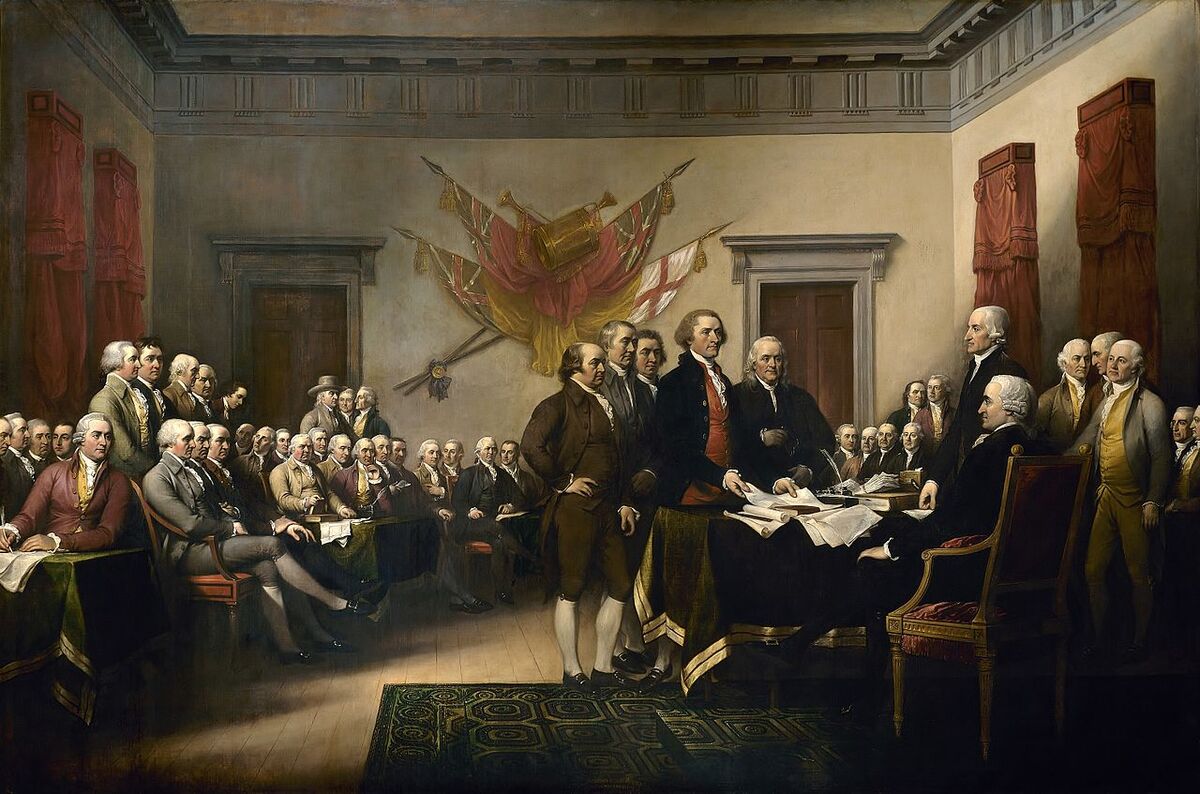
Presentation of the final text of the declaration to Congress
The 19th century saw the emergence of new rights designed to protect individuals more precisely. The Industrial Revolution led to major changes in working conditions. To ensure better working conditions and put an end to the abuses of industry leaders, the 19th century saw the emergence of the first forms of workers' rights. Throughout the century, a number of social rights were defined (women's rights, children's rights).
Human rights continued to develop throughout the 20th century, building on the ideas of the 18th and 19th centuries. It was in the 20th century that many countries introduced rights for women, blacks, children, workers and homosexuals, as well as laws against torture and forced labour. All these measures are aimed at eliminating all forms of discrimination.
However, the most significant event of the 20th century was the creation of the Universal Declaration of Human Rights, which has been in force since 1948. Since then, United Nations (UN) bodies have been monitoring respect for these rights to combat oppression and discrimination.
Several legal texts have been written to describe the human rights to be respected. Depending on the time and context in which they were written, there are certain nuances between them. This is why the main declarations will be described: the Declaration of Independence of 4 July 1776, the Declaration of the Rights of Man and of the Citizen, the Universal Declaration of Human Rights and the Canadian Charter of Rights and Freedoms.
Basically, this declaration was drafted against the British leaders. In 1776, the British colonies in North America wanted to break away from the mother country.
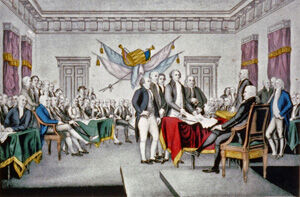
Members of the colonial congress
The members of the colonial congress, all gathered together, wished to make it known that they no longer recognised British authority. They also wanted to obtain the right to make decisions and legislate in all matters concerning the colonies. This declaration marked the beginning of the War of Independence and is considered to be the founding act of the United States.
These new ideas were largely inspired by Locke, Montesquieu and Rousseau. The Declaration defended natural rights (life, liberty, the pursuit of happiness) and democratic principles (everyone could participate in power).
This declaration is based on the four values that marked the French Revolution as a whole: liberty, equality, law and political association. The most important principle is that of liberty. However, this freedom is limited by the laws, which must be the same for everyone. With liberty also comes equality, which is natural and does not depend on social status.
In this declaration, the law takes precedence because it is the expression of reason and a source of justice. Only natural rights can counter unjust laws. The best political association is democracy, since it separates powers and ensures greater respect for individual freedoms.
After the Second World War, the world's states became aware of the situations that can arise when only the state can control the treatment it inflicts on its citizens.
It was for this reason that the states of the world got together to draw up a universal charter of human rights, a charter that all countries would have to respect. The authors had to create a universal charter that applied to everyone, regardless of language, culture or religion, and that respected diversity. The Universal Declaration was born in 1948 and represents the collective vision of a fairer and more just world. The text has been used as a model in several countries and has been incorporated into the constitutions and laws of several countries.
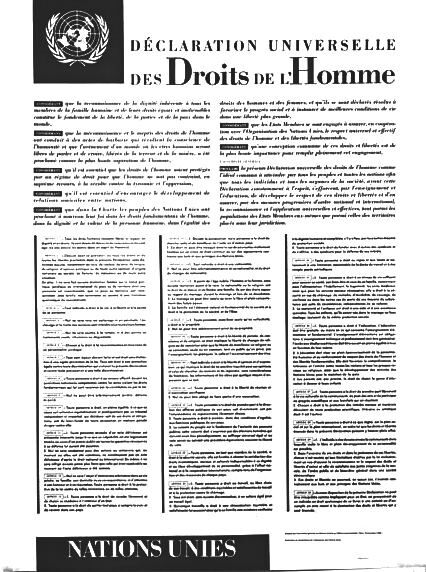
The 1948 Universal Declaration of Human Rights
In 1966, the UN added two legal covenants to the Declaration: the International Covenant on Economic, Social and Cultural Rights and the International Covenant on Civil and Political Rights. These two covenants, combined with the Universal Declaration of Human Rights, form the International Bill of Human Rights.
This charter has been approved by 130 countries and translated into 250 languages. The Universal Declaration is also the most quoted human rights text in the world.
Drawing heavily on the Universal Declaration, Canada has drawn up its own charter of human rights. This charter defends the fundamental freedoms of conscience, religion, thought, belief, opinion, the press and association. The Charter also guarantees the rights to equality and education. In addition to these fundamental rights, there are democratic rights and legal safeguards (guarantees of liberty, security, protection against unreasonable search and seizure and against arbitrary imprisonment). The Charter also specifies Canada's two official languages, guaranteeing service in French or English.
